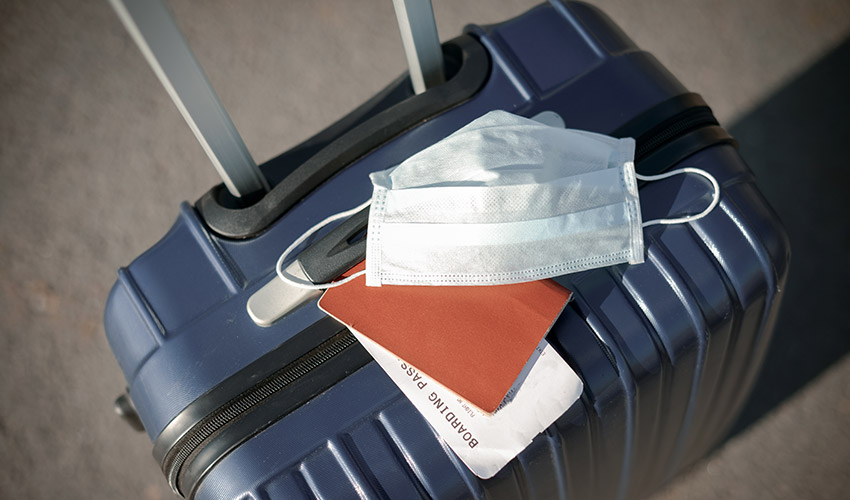5 steps for planning a return to business travel

As states and countries come out of lockdown and start to reopen their borders in the wake of COVID-19, many companies are likely contemplating when—and how—their employees may be able to start traveling for business again.
Business travel can present risk and uncertainty at the best of times, and employee health has always been a concern for both travel managers and the travelers themselves—along with the potential dangers posed by civil and political unrest, natural disasters, and petty crime. Now, of course, health has become one of the primary concerns and it’s more important than ever for companies that send business travelers across countries and continents do their best to ensure their safety and wellbeing.
Protect your employees and your company by evaluating the risks, proceeding with caution, and planning with care. Consider these five steps as business travel resumes.
-
Update company business travel rules
Given the new risks faced by travelers, it’s critical to examine all your internal policies and best practices—and make sure that employees understand them before they make any trips on the company’s behalf.
Review and update company travel guidelines covering:
- Destination-specific employee education and information (including local healthcare and mental healthcare providers, travel insurance contacts, and other applicable resources).
- Acceptable travel partners and providers, vetted for safety.
- Communication of, and approvals required for, any desired departure from plans.
- Emergency protocols (communications, on the ground contacts and other resources).
- COVID-19 related considerations, such as:
- Precautionary health screening and/or vetting requirements for employees and their families
- Hygiene and safety best practices (for social distancing, PPE, etc.), that follow the recommendations of official organizations like U.S. Centers for Disease Control and Prevention (CDC) or the World Health Organization (WHO).
-
Assess the necessity of business trips to your bottom line
After a moratorium on most business travel, companies are looking hard at which travel costs are necessary and which are not. This is especially true in those industries that face pandemic-driven financial shortfalls and/or in which meetings are easily conducted remotely.
Of course, some meetings and business transactions are better done in person. To judge what’s best for your company, consider these factors:
- Will the trip directly result in desired sales or business goals?
- Does a competitive situation warrant the trip?
- Is the trip for an essential training purpose?
- What are possible alternatives to an in-person trip?
- What is the potential reward compared to the risk of an in-person trip versus the alternatives?

-
Closely monitor destination travel advisories and travel partners
From local pandemic spread indicators and variations in mandatory quarantine practices to fluctuating international government regulations — today’s business travel parameters are complex and quickly changing. They require close monitoring and a nimble response.
While planning any trip, obtain the latest, location-specific pandemic travel advisory guidance. The U.S. Department of State website lists travel advisories for not only COVID-19 outbreaks but also for other issues (such as terrorism) that may be affecting the destination country. The Johns Hopkins University & Medicine Coronavirus Resource Center maps global and U.S. state virus outbreak data and trends.
Guard against the pandemic’s effect on “typical” risks — for example, pandemic-induced financial hardship may increase the incidence of petty theft or stolen luggage.
Before booking transportation or lodging, make sure their respective cleaning protocols are optimal and that the vehicles or buildings have experienced no recent outbreaks.
-
Prepare employees to be flexible and patient
A spike in destination cases, an airplane suddenly grounded for emergency cleaning — even a brief exposure to a COVID-19 positive patient — can lead to a trip being canceled or having to quarantine in a foreign country. These situations not only affect traveling employees, they also require that travel resources be available to them 24/7.
Prepare employees for more than the usual delays, inconvenience and frustration. The Mayo Clinic offers some detailed advice on what and how to pack for optimum pandemic travel efficiency, while adhering to regulations.
Travel assistance services and apps, such as International SOS, can also be a useful resource for employees traveling abroad for business, providing destination-specific advice and security alerts.
Especially in high-risk locations, have worst-case safety protocols in place. These include emergency communications and evacuation plans, etc.
-
Make sure your business travel insurance covers the current landscape
Given the evolving exposures to employee health and safety caused by the pandemic, your current business travel policy may contain gaps in optimal coverage. Ask your insurer to customize a policy for your company’s particular needs.
Learn about the business travel protections that Chubb offers.
This document is advisory in nature and is offered as a resource to be used together with your professional insurance advisors in maintaining a loss prevention program. It is an overview only, and is not intended as a substitute for consultation with your insurance broker, or for legal, engineering or other professional advice.
Chubb is the marketing name used to refer to subsidiaries of Chubb Limited providing insurance and related services. For a list of these subsidiaries, please visit our website at www.chubb.com. Insurance provided by ACE American Insurance Company and its U.S. based Chubb underwriting company affiliates. All products may not be available in all states. This communication contains product summaries only. Coverage is subject to the language of the policies as actually issued. Surplus lines insurance sold only through licensed surplus lines producers. Chubb, 202 Hall's Mill Road, Whitehouse Station, NJ 08889-1600.

Seeking a business insurance quote?
We can help with that.
